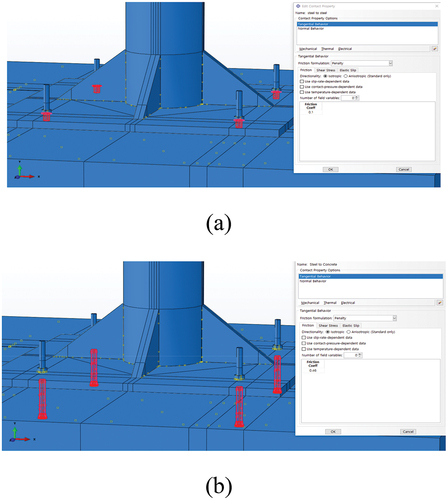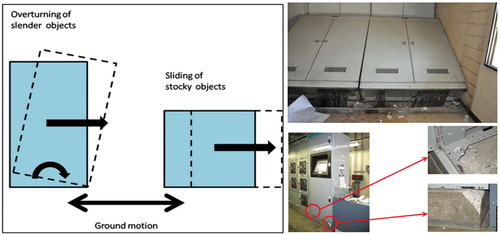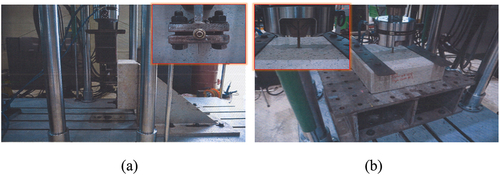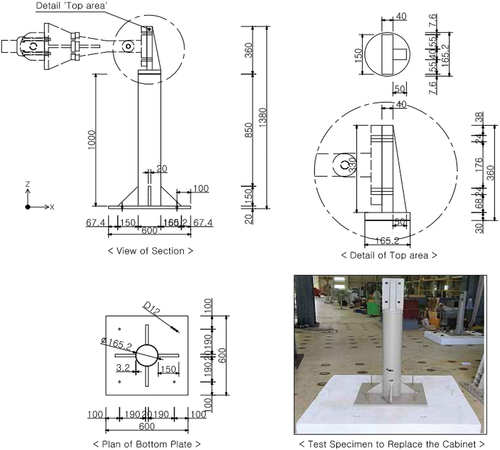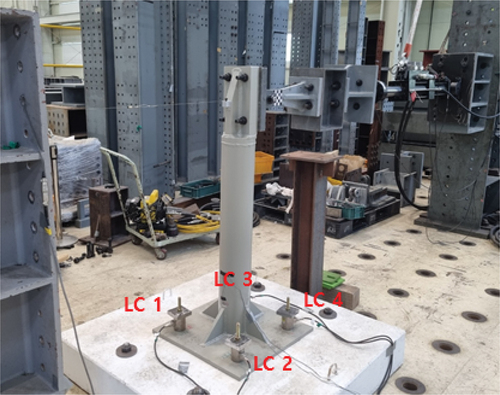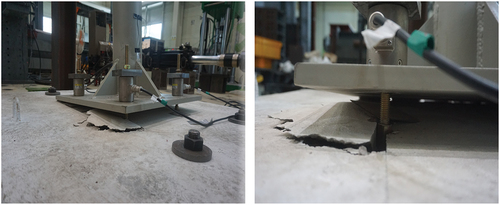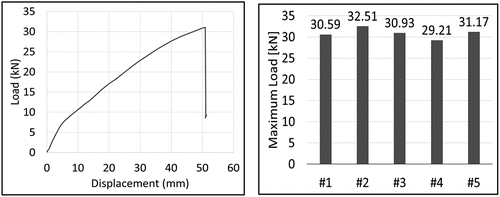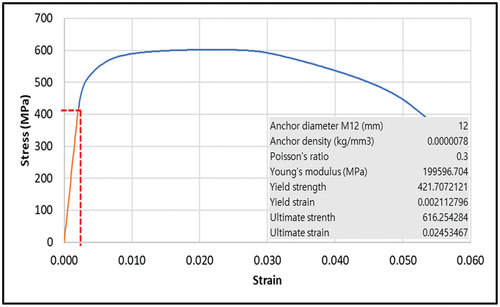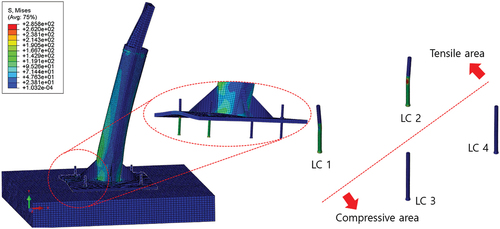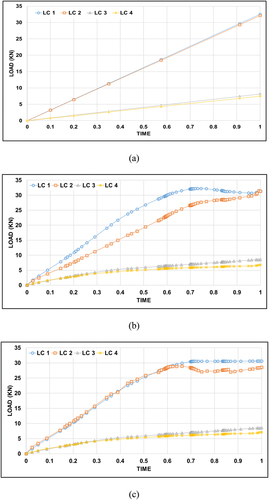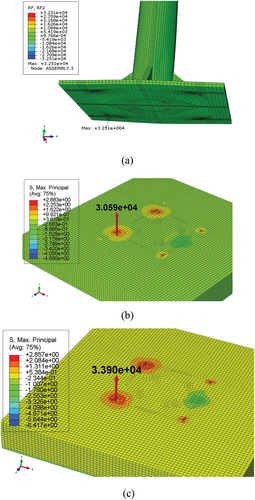Figures & data
Figure 2. (a) seismic performance criteria for cabinets by field, (b) view of actual site installation, and (c) lower welded appearance in seismic performance evaluation.
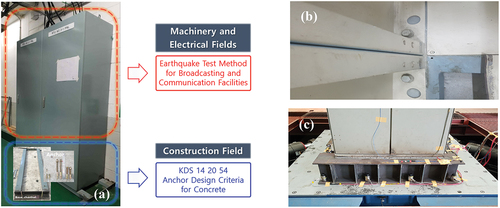
Figure 5. Typical load-displacement curves and maximum loads for each test: (a) shear and (b) pull-out.

Figure 11. The tendency of tension and compressive load of post-installed anchor reflecting on-site installation conditions.
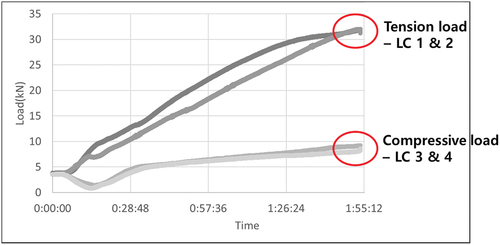
Figure 15. Response of concrete to a uniaxial loading condition: (a) compression behavior and (b) tension behavior.
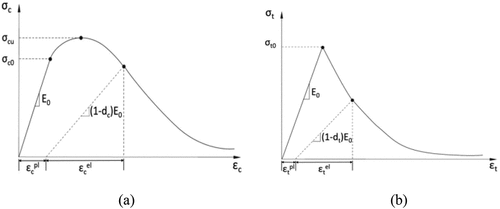
Table 1. Steel and concrete properties in the elastic region.
Table 2. Boundary condition parameter study to gain the anchor load.
Figure 16. Friction coefficient of the contact for each material: (a) steel to steel and (b) steel to concrete.
